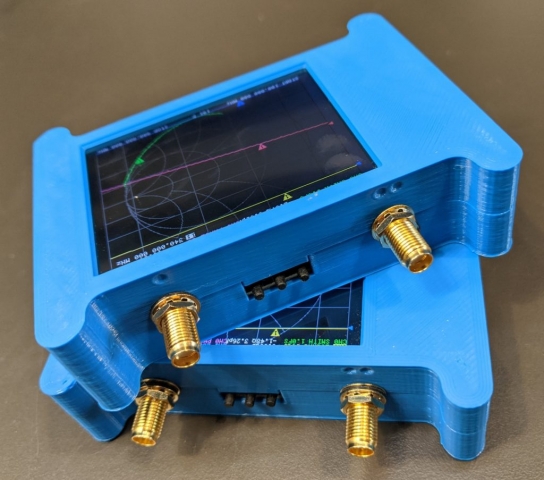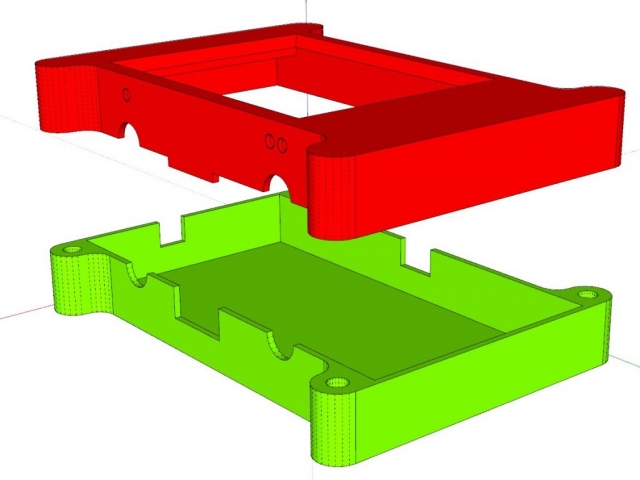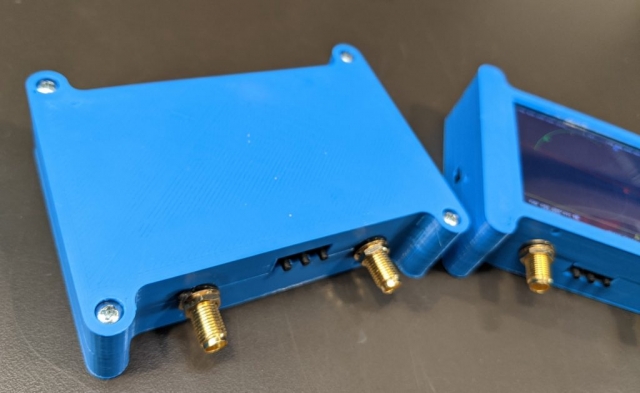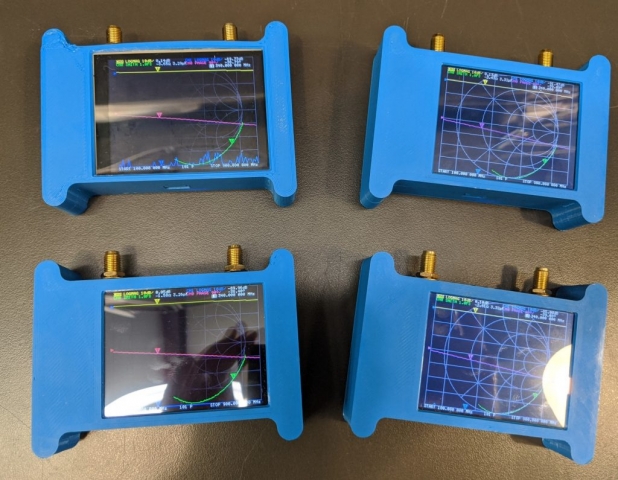- +1 919 200-0292
- info@antennatestlab.com

nanoVNA-V2 3D Printed Enclosure
nanoVNA-V2 3D Printed Enclosure
The $60 VNA from 50kHz – 3GHz
Various “nanoVNA” hobbyist products have been available for a couple of years now. Recently, a new one was designed by OwOComm and released as open-source. A growing number of vendors will be organizing hardware builds and making them available for around $60. Probably one of the most reliable sources is this builder on Tindie. Here is a great introductory article and here is the data repository page.
During the COVID-19 pandemic, a lot of our customer’s design engineers were working from home. This often meant paperwork was being attended to, but little antenna hardware was being created. So Antenna Test Lab bought up some of the nanoVNA-V2’s, designed a 3D printable case, and gave them away to customer engineers for their work-at-home use (mainly in tuning antennas). We’ve been asked for the 3D case design, and you can download our 3D design and STL files here. The zip package also includes the Sketchup source CAD files so you can use the free Sketchup 3D CAD tool to make your own design modifications. The case is screwed together with four screws (use #4 size pan head, 3/4″ long, Plastite, sheet-metal, or wood screws). Use some scrap compressible foam in the bottom of the case to keep the PCBs and display pressed firmly up against the case’s top bezel.
We get asked “are these nanoVNAs as good as real VNAs”. While a nanoVNA may be useful for basic swept loss (S12) or tuning an antenna’s return loss (S11) they pale in comparison to a laboratory VNA. Our test lab runs on a pair of 4-port Rohde and Schwarz ZVA 40 GHz VNAs that have been modified (mostly removing the directional couplers and relays within their test sets) to reduce noise floors and internal cross-talk to allow 3-port commercial antenna testing on a far field range. These instruments have dynamic ranges 130 dB or greater, with sweep rates hundreds of times faster than the nanoVNA-V2.




